Text



Portrait of the Jester Calabazas
c. 1631–32
Diego Velázquez
Calabazas, a jester in the court of King Philip IV of Spain, had physical and mental disabilities, a state that the artist emphasizes, rather than tries to hide. While the Spanish court prized and doted upon people with disabilities such as Calabazas, Velázquez transformed their depiction in portraiture. This startling work uses the format of the formal, full-length court portrait to present a type of person who was generally perceived as marginal at this point in history and profoundly humanizes him.
0 notes
Text
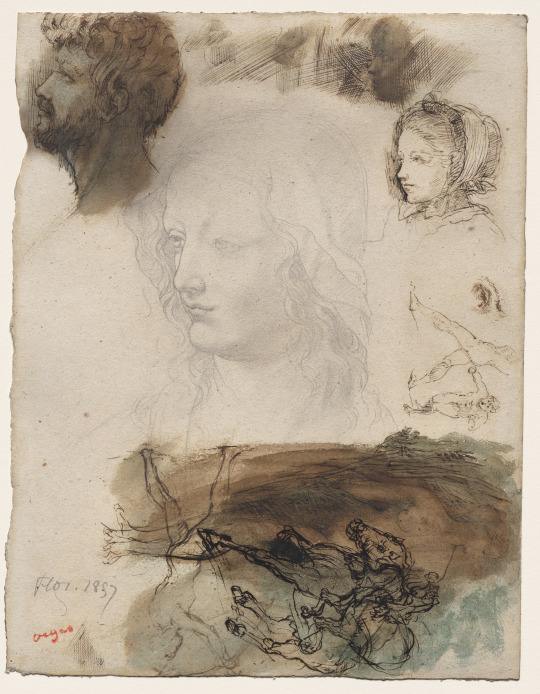
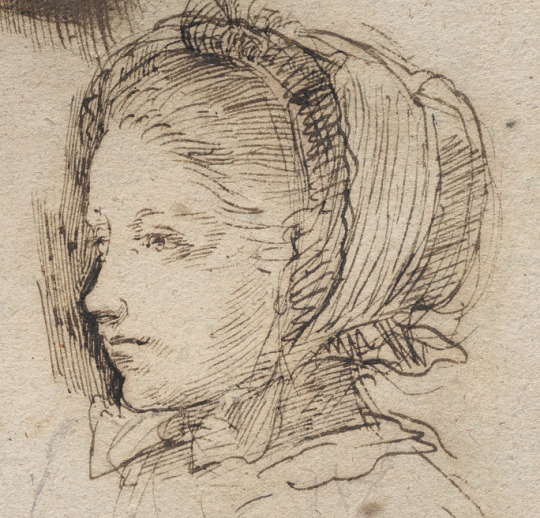
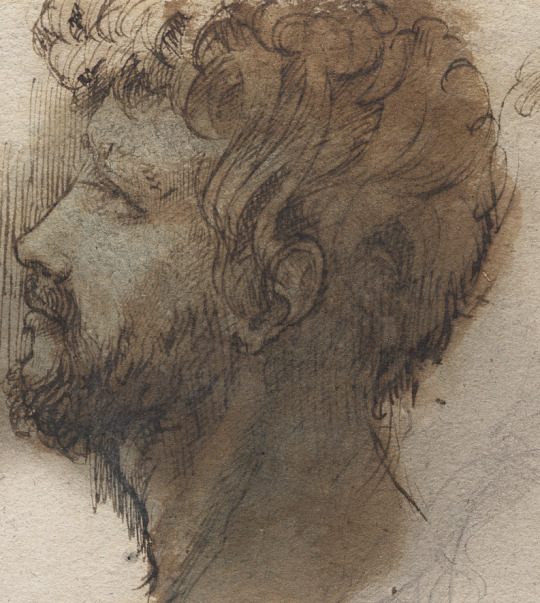
Sheet of Studies and Sketches
1858
Edgar Degas
Degas traveled to Florence, Italy, in July 1858, where he made this sheet of studies. The featured imagery is fragmented and dissociated, suggesting the young artist's engagement with art of the past. The refined female head drawn at center in graphite was copied from a drawing then attributed to Leonardo da Vinco in the Uffizi Gallery's collection. Other sketches record Degas's responses to Florentine sculpture. At upper right, he sketched an informal portrait of his cousin Giulia Bellelli, probably from life.
0 notes
Text

Jar with Dragon Design
백자 청화 운룡무늬 호 (白磁靑畵雲龍文壺)
1700s
Korea, Joseon dynasty
A mythical creature believed to have the power to make rain, the dragon is a prominent symbol of rulers in premodern East Asia. In underglaze cobalt blue, a dragon on this jar is depicted flying through clouds to catch a flaming, wish-granting pearl called a cintamani. In the royal court, the shorter type of dragon jar was used to hold wine, the tall type, such as this one, was for holding a bouquet of flowers.
0 notes
Text
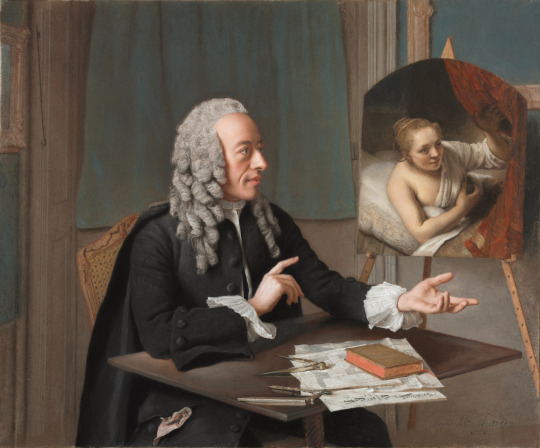
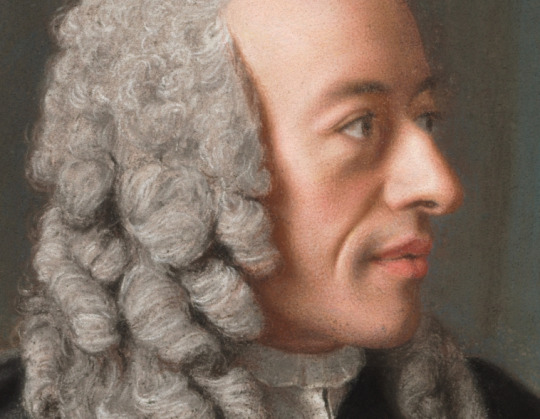
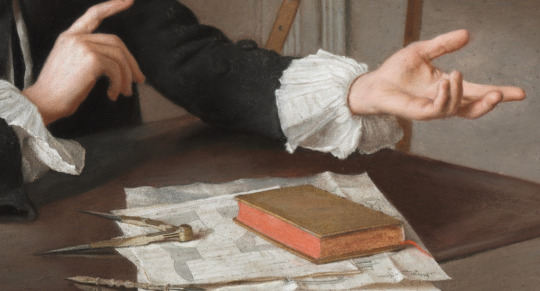
François Tronchin
1757
Jean-Etienne Liotard
This pastel drawing depicts François Tronchin, a prominent figure in his native Geneva and an impassioned patron of the arts. The table before Tronchin features a book, mathematical instruments, and papers that indicate his interests in architecture and music. Rembrandt's Lady in Bed, a painting that the Dutch master created around 1645 (today in the collection of the Scottish National Gallery) and the most highly prized painting in Tronchin's collection, rests on an easel nearby. Liotard considered the portrait of Tronchin among his finest works, and the meticulous rendering of the sitter's powdered wig, transparent flesh, and lace cuffs suggest the skill he had developed in pastel at this time.
0 notes
Text


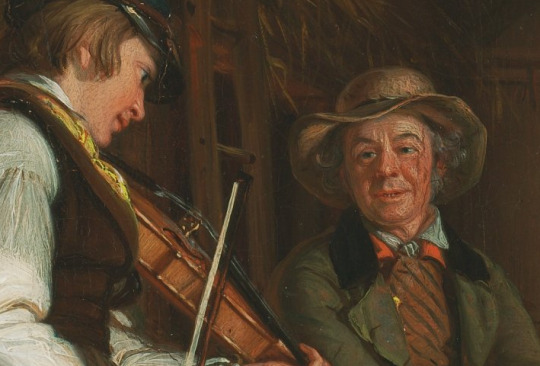
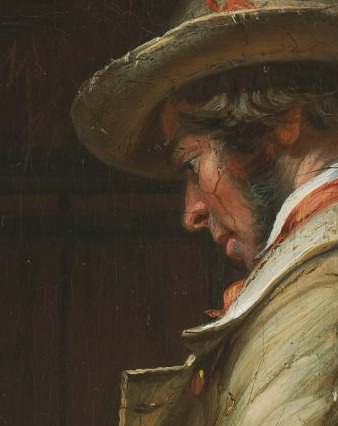

The Power of Music
1847
William Sidney Mount
Set in rural Long Island before the Civil War, Mount's complex painting presents an African American laborer listening intently to a fiddle tune enjoyed by white men. While a love of music unites the figures in a bond of shared humanity, the two races occupy different spaces--one inside, one outside, both separated by a barn door--effectively symbolizing the pronounced divisions in America at the time.
13 notes
·
View notes
Text
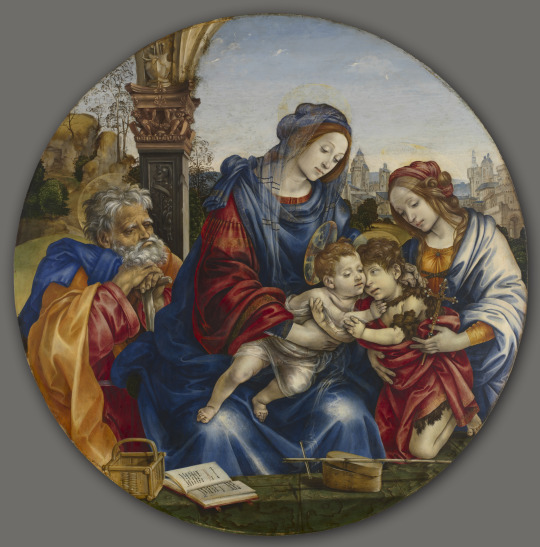


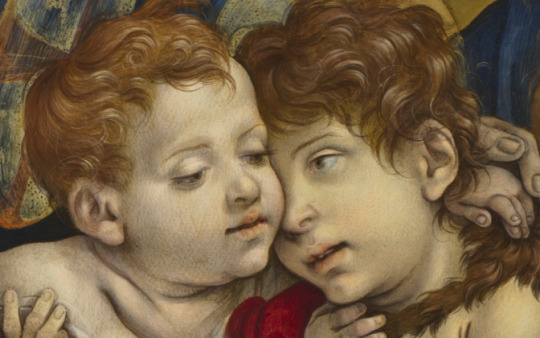
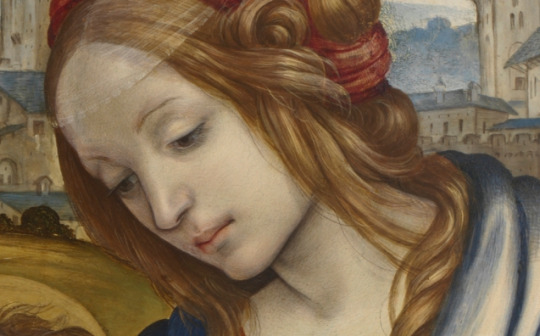
The Holy Family with Saint John the Baptist and Saint Margaret
c. 1495
Filippino Lippi
Lippi’s sophisticated composition gracefully overlaps five figures in a round format. Oliviero Caraffa, Cardinal of Naples, commissioned this work, although Lippi probably painted it in Rome while working for the cardinal’s family, an example of the widespread taste across Italy for the art of Florence. Meticulously detailed still-life elements on the parapet, thick with symbolic meaning, reflect Lippi’s interest in northern European painting he would have seen in Florence. Likewise the classical architecture—referring to the pagan world cast off by Christianity—demonstrates his engagement with ancient art and architecture in Rome. Embellished with learned references and made with expensive materials, this painting would have actively inspired religious meditation and demonstrated the patrons’ courtly, civilized taste.
0 notes
Text

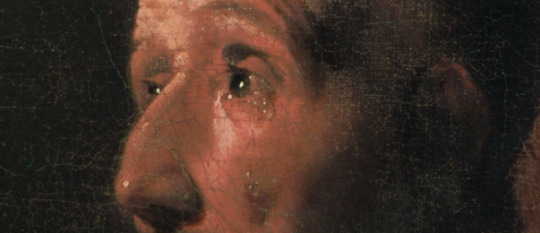
Saint Peter Repentant
1645
Georges de La Tour
During Jesus’s arrest on the night of the Last Supper, the apostle Peter denied knowing him. Although Christ forgave his betrayal, Peter was consumed by guilt. La Tour represents Peter as an old man, reflecting on his past actions in a state of perpetual repentance. The apostle’s red-rimmed eyes and the uncertain light of the lantern suggest anxious sleepless nights; muted colors and simple forms give visual expression to Peter’s somber emotions. Unlike other artists inspired by Caravaggio, La Tour worked in relative isolation in northeastern France, and his connection to his Italian counterpart remains unclear.
0 notes
Text

Funerary Portrait of a Young Girl c. AD 25-37 Egypt, Roman Empire, late Tiberian
Traditional Egyptian burial practices continued well into Roman times. These lifelike portraits were made for a specific purpose: to cover the head of the mummified individual represented in the portrait. Typically, they were painted with encaustic (pigment mixed with beeswax) on wooden panels, as was the case here. Less frequently, they were painted directly onto the linen shrouds that covered the mummy. Hairstyles, jewelry, and clothing are carefully rendered according to contemporary fashion. Meticulously rendered details such as skin tone, facial hair, and bone structure suggest a keen sense of the subject's individuality, and with it, an inevitable sense of mortality. The addition of gilded details on the lips and jewelry is a rare detail that alludes to the individual's transformation in death into a blessed spirit, or akh, a being of light.
42 notes
·
View notes
Text

Icon of the Mother of God and Infant Christ (Virgin Eleousa)
c. 1425–50 attributed to Angelos Akotantos
This type of icon is known as the Virgin Eleousa (Virgin of Tenderness) characterized by the touching cheeks of mother and child in a loving moment. The icon signifies Christ’s incarnation, suffering, and death for the sake of humankind. Three ornamental stars on the Virgin’s cloak are traditional symbols of her chastity; a blue cap covers her hair and protects her modesty. The child wears a pale green tunic and deep orange cloak, both highlighted in gold. The Christ Child holds a scroll tied with a ribbon, a symbol of the Gospels. The icon was painted by the Cretan icon painter Akotantos, the preeminent artistic personality on Crete during the 1400s. This icon is from his period of greatest activity and pre-dates the collapse of Constantinople in 1453. The treatment of the faces and draperies is handled with fluency and skill and reveals Akotantos to be a painter of great talent. Given its large scale, the icon was intended for use within an orthodox church, possibly a monastery, and not for a private home.
1 note
·
View note